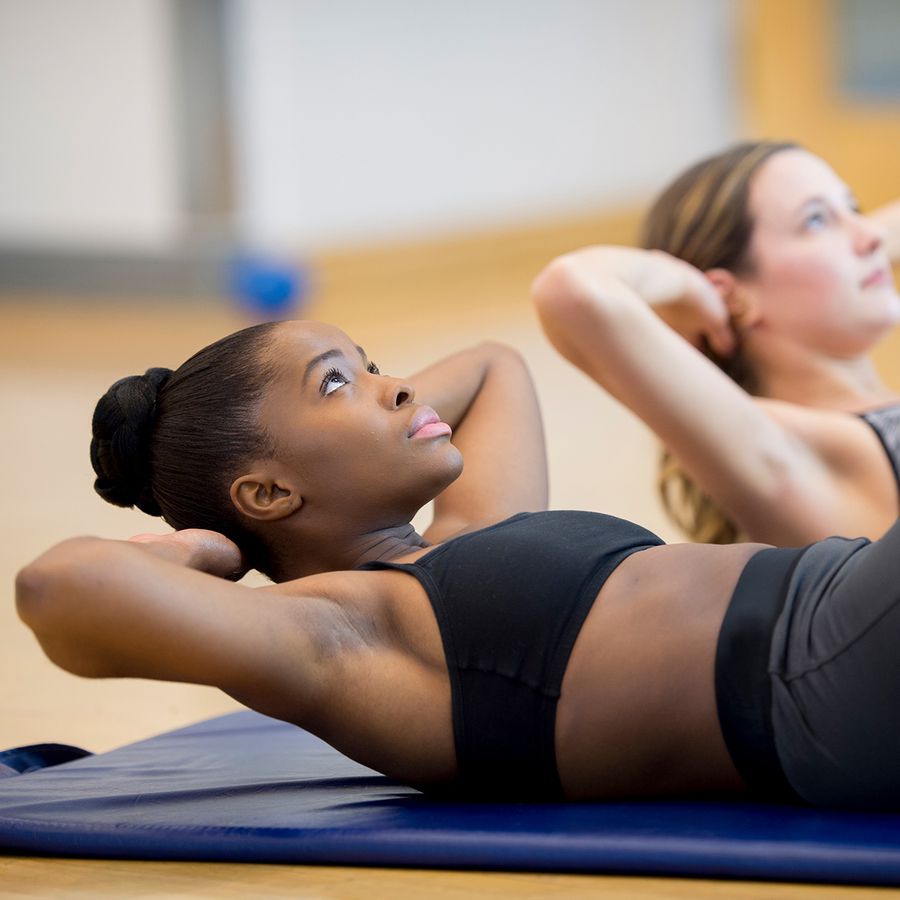
Like most ever-evolving gym-goers, I finally realized I needed to start doing more core work. But when I added a ton of crunch variations to my regular routine, I realized it wasn’t my abs that were tapping out from exhaustion—it was my neck. Every time I came up, the muscles holding my head were crying out louder than my soon-to-be six-pack. The pain went away like typical muscle soreness, so I assumed it just meant my neck was weak. Embarrassed, I never thought much of it until I was working out with a friend and halfway through a round of the abs-strengthening exercise, unprompted, she said that she didn’t even feel it in her core, but instead—you guessed it—in her neck.
Luckily, one tweak can get you closer to knowing how to do crunches the right way.
A handful of studies have shown that simply tucking your chin toward your chest before and during a crunch can reduce the muscle activity in your neck. Why? It activates the hyoid muscles—which run from your chin to your collarbone—to act as stabilizers, says McCall.
Try it: Visualize holding a peach between your head and your throat, McCall suggests. If you don't squeeze, you'll drop it, but too much pressure will squish the fruit, releasing juice everywhere. (If visualizing just isn't working, try folding up a towel and squeezing it between your chin and your chest.) Then, rather than placing your hands behind your head for the crunch (which encourages you to pull on the head and create further strain), place your hands on your forehead to minimize neck pain while doing crunches.
In fact, a 2016 study in Journal of Physical Therapy Science found that when people both tucked their chin and lightly touched their face during a crunch, it relaxed their sternocleidomastoid—the thick muscle that runs from your ear to your collarbone—and alleviated neck pain, compared to when they did a basic crunch. Bonus: The variation engaged their abs and obliques more, too.
Another tip on how to do crunches? You also want to pull your low back and stomach into the floor, as this adds a slight posterior pelvic tilt, keeping the upper spine from being able to move independently, says Seedman. And move up really slowly to prevent neck pain while doing crunches. ″People often think in a crunch, they need to get their torso off the ground in this big motion. But it should really be a small, compact movement,” he explains. Remember, your goal is to activate your core, not to bring your shoulder and head up. If you take the momentum out and glue your lumbar spine to the mat, it signals to your nervous system to create contractions in your core, actually working your abdominal muscles in a way that makes you stronger and keeps you pain-free.
